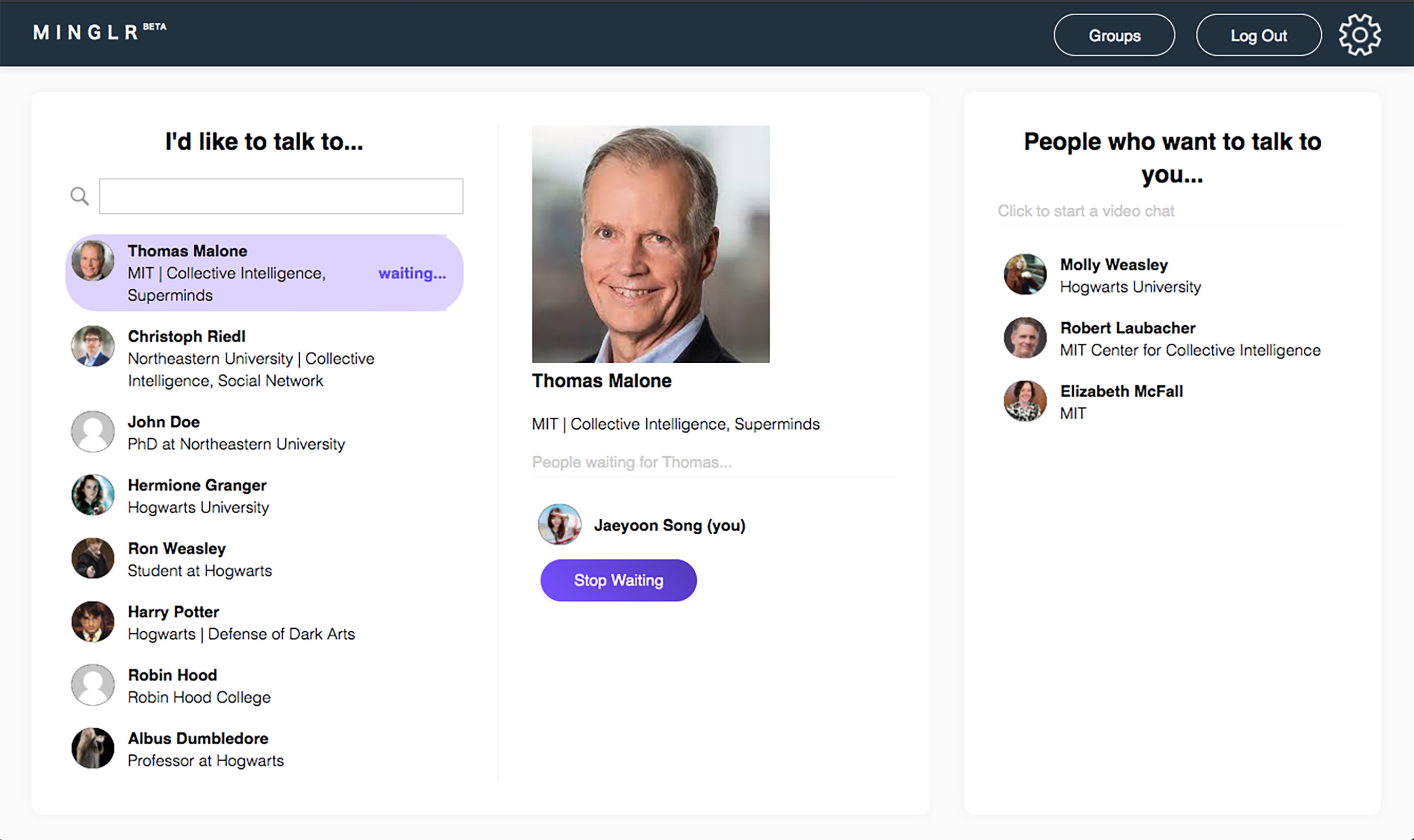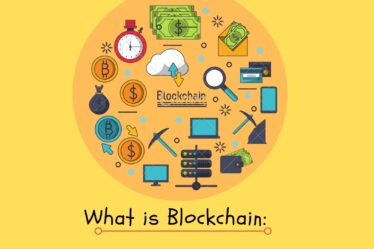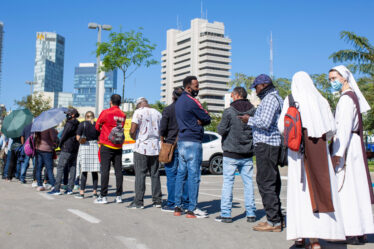
Tom Malone refused to believe that watercooler conversations were dead just because so many people were suddenly working from home during the pandemic. He knew that random workplace chatter can help people build trust and form bonds. And as a researcher who studies technology and organizational design, he says, “it seemed obvious to me that there should be ways to support informal interactions” at virtual conferences and in online workspaces.
So Malone, who teaches at MIT’s Sloan School of Management, worked with a graduate student to develop Minglr, open-source software that anyone can download and use to meet with people who indicate they’re free to chat. The interface is like AIM and Zoom rolled into one: the left panel shows who’s free, along with an avatar and relevant information such as title and conversational interests; a middle panel lists a queue of people who want to talk with you now; the right panel shows another list of people who want to talk in the future.
Malone tested Minglr at a virtual conference in June and wrote a paper describing the response. About a third of attendees used the software, and they had two conversations apiece on average. He acknowledges that tools like Minglr and Zoom don’t perfectly replicate the feeling of being around the watercooler or coffee machine. But he doesn’t think impromptu conversations must be lost to the pandemic.

MINGLR
Malone isn’t the only one who thinks this type of spontaneous casual interaction can be saved. As the pandemic turns traditional office culture upside down, workers are finding creative ways to seek such connection. And these changes will likely linger after a coronavirus vaccine makes it safe for many to return to work. With offices already reconfiguring open plans, and the possibility that common spaces like snack bars and conference rooms will be off-limits, the literal watercooler conversation could be an artifact of a bygone era.
If that’s the case, replacing it is important. Experts suggest that at best, a workplace with no interaction between siloed groups—creative with finance, for example—can make people feel more like worker bees. At worst, it can stifle creativity and collaboration. Deborah Tannen, a professor of linguistics at Georgetown University, says this type of small talk “is crucial because it keeps the gears of relationships going” and can establish common ground.
Technology has offered a ready solution for some types of ad hoc conversations during the pandemic. Facebook and Instagram Lives, Reddit Live, Discord, Twitch, and Omegle (a program that facilitates video chats with strangers) allow people to drop in to events like a yoga session, a dance party, or an influencer’s “ask me anything” session.
But replicating chance encounters at the office is more difficult over video chat, where meetings are planned ahead and attendance is restricted. And for some who rely heavily on networking and watercooler chat to fuel their days, the last few months have been excruciating.
“I love going to events and meeting people in person,” says Sarah Solomon, who runs a public relations agency on the US West Coast and used to meet people over coffee or find potential clients at events. Once the pandemic made that approach difficult, she turned to LinkedIn but wasn’t satisfied. “Messaging can only take a relationship so far,” she says. “Nothing compares to meeting someone in person.”
Solomon decided to try Assemble Network, which organizes small groups of up to 14 participants to meet on Zoom once a week for a month. It’s not as random as a networking event, but Jill Katz, the founder of Assemble Network, says the fact that participants are all invested in forming connections (she charges $225 a month for four 90-minute sessions) makes it more likely they will do so.
Katz says Assemble Network creates an environment very different from what she observed at networking events before starting her service: clumps of people hanging around awkwardly in a loud, uncomfortable environment, stacks of business cards in hand. “I thought, ‘Oh my goodness, this is a disaster,’” she recalls. “In order to actually network in this environment, you have to physically break into a circle!”
Katz is now in her second year running Assemble Network and has seen interest grow: she’s thinking of doubling her availability (she personally leads each session). Solomon credits the connections she formed there with shifting how she viewed her potential as a small-business owner.
But a person doesn’t necessarily have to pay to try to rekindle the serendipity of networking at a conference. Gretchen McCulloch, a renowned linguist, has tried to re-create that spontaneity with what she’s called a #virtualcoffeebreak.

